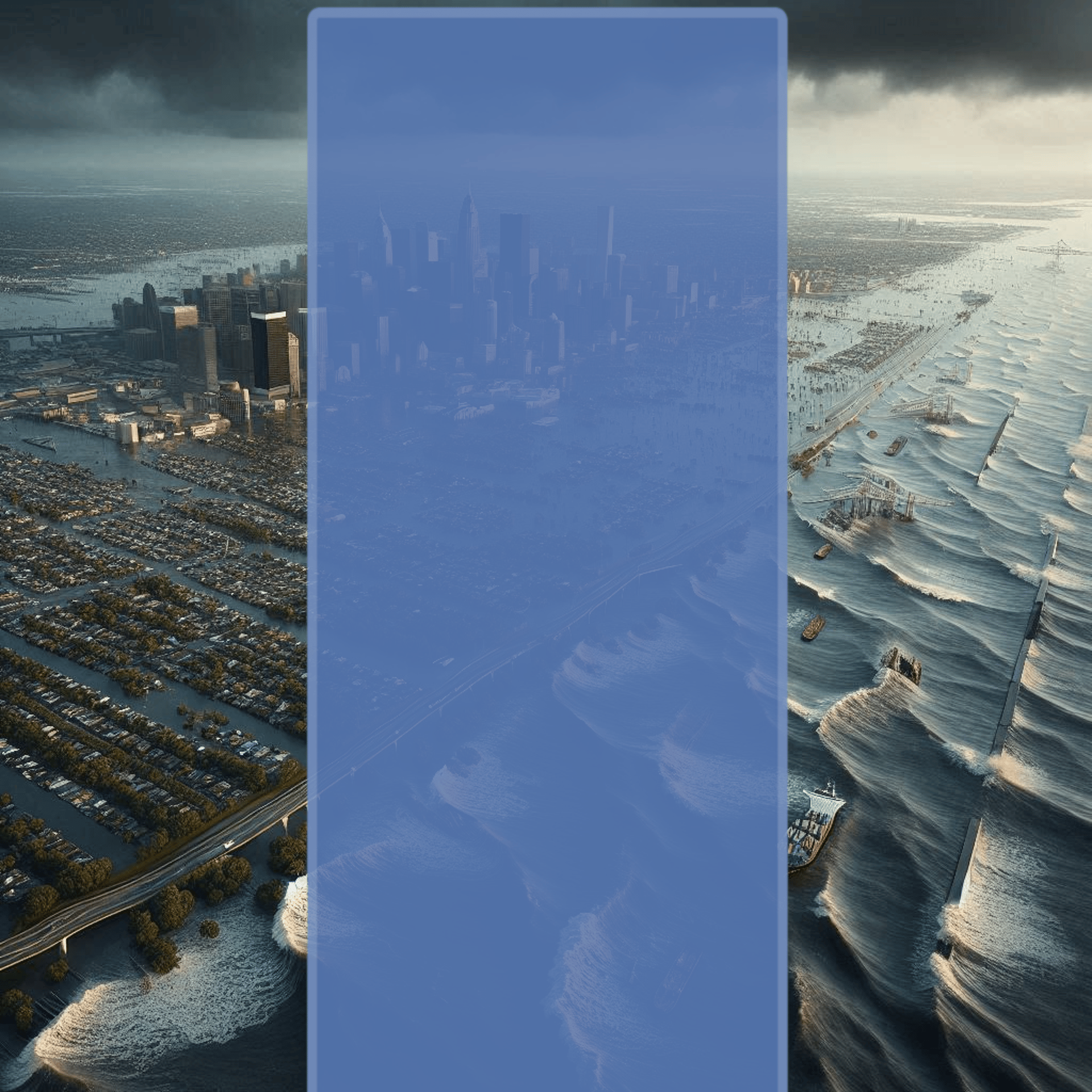Heartland Opens Its Doors as Coastal Barriers Fail
As massive hurricanes breach long-failing coastal barriers, millions flee inland, turning the American Midwest into the last refuge of dry land. The Heartland Signal reports on the governors of Minnesota and Illinois pledging unity and aid for displaced citizens—even as farmers, economists, and local officials warn of looming food shortages and social collapse. Amid compassion and fear, the Heartland faces its greatest test: how long can it remain both generous and sustainable?
HEARTLAND SIGNALHEARTLAND MIGRATION
Alina Cortez | The Heartland Signal
8/12/20643 min read

ST. PAUL, MN — August 12, 2064 (The Heartland Signal) - After decades of warnings and billions spent in mitigation, the ocean has finally reclaimed the coast. In the span of five days, three Category 6 hurricanes—Helena, Kade, and Morrow—pummeled the eastern and southern seaboards, overwhelming decades-old sea walls that once defined humanity’s triumph over nature.
The Atlantic and Gulf coasts are now a mosaic of flooded suburbs, half-submerged towers, and silent highways. Drones from the National Weather Bureau show storm surge depths exceeding thirty feet in some areas, permanently breaching barriers once thought indestructible. The government has begun referring to the region stretching from Norfolk to Houston as “the Blue Zone”—a term that will likely replace “coastal states” in the nation’s vocabulary.
As tens of millions flee inland, the Midwest has become the final dry ground of America.
A Call for Unity Amid Crisis
In a joint teleconference Sunday evening, governors from the Great Lakes states pledged solidarity in accepting evacuees, calling it “the defining humanitarian test of our generation.”
“These aren’t outsiders or migrants,” said Minnesota Governor Elena Vargas, addressing reporters from the emergency logistics hub in Duluth. “They’re citizens—our fellow Americans—running from the same storms that might one day reach us. Minnesota has food reserves, habitable land, and the decency to share both. We will not build our future by closing our gates.”
Vargas, whose own family roots trace back to the Gulf Coast, announced an immediate expansion of the Inland Shelter Network, a program converting unused commercial districts and foreclosed suburban developments into temporary housing.
Across the border, Illinois Governor Calvin Rourke echoed the sentiment while touring a recently reopened grain distribution terminal in Rockford.
“Illinois was built on rebuilding,” Rourke said. “We rose from fire, from floods, from financial collapse—and every time, it was the working class that rebuilt this state brick by brick. The refugees coming here will do the same. We’ll give them jobs, dignity, and a chance to start over.”
He paused, glancing toward a wall of arriving evacuees, many still wearing the same clothes they’d fled their homes in. “If the coasts are gone,” he added quietly, “then the Heartland is the nation now.”
Voices of Dissent
Not everyone agrees. Within hours of the governors’ joint announcement, agrarian consortiums, shipping unions, and independent food cooperatives issued statements warning that the region was on the brink of its own disaster.
Across social channels, the National Agricultural Stability Council—a coalition of private farming interests and logistics networks—called the governors’ pledge “reckless optimism.”
“Our grain yields are down twenty-nine percent due to drought stress and soil nutrient loss,” said NASC spokesperson Shelby Krantz in a live interview with The Heartland Signal. “We can’t feed ten million new mouths when our silos are already half-empty. Compassion doesn’t plow fields, and climate doesn’t negotiate. This isn’t cruelty—it’s math.”
Analysts warn that while the Heartland may have land, it lacks the infrastructure to sustain a migration of this scale. Deteriorating rail lines, aging water systems, and depleted soil reserves may turn welcome centers into humanitarian crises within weeks.
Some rural mayors, already struggling to manage their own populations, have openly defied the governors’ request to repurpose municipal facilities as shelters. “If we open our schools to refugees, we close them to our own kids,” one county official in northern Iowa told The Heartland Signal under condition of anonymity.
A Divided Kindness
Still, volunteers line the platforms of rail stations from Madison to Grand Rapids. Churches and retired VFW halls have reopened as ad-hoc shelters. Donation trucks from as far west as Montana have arrived carrying blankets, canned goods, and portable solar batteries.
At the Twin Ports Terminal in Duluth, more than 6,000 evacuees arrived by freight over the weekend. Among them was Lydia Corbin, a former teacher from Norfolk, who described the moment the levees broke.
“We watched the water come through the gaps in the barrier like it was boiling,” she said, clutching her son’s hand. “By the time we made it to higher ground, there was no city left. Just rooftops and lights underwater.”
She says she doesn’t know if her husband survived. The last message she received was a text that read simply: “Don’t look back.”
Aid workers admit that for every family processed, hundreds more are still waiting along the broken interstates or trapped in inland camps across Tennessee and Arkansas. Federal response remains slow, hampered by damaged rail infrastructure and fuel shortages.
A Heartland at a Crossroads
Economists at the University of Madison estimate that the influx of refugees could increase the Heartland’s population by twelve to fifteen percent within two years. Supporters argue that the migration could breathe life into declining industrial towns and solve long-term labor shortages, while critics warn it could trigger food riots if supply chains collapse.
What began as a humanitarian mission is rapidly becoming a test of the Midwest’s identity.
“The Heartland has always prided itself on hard work, fairness, and community,” said Governor Vargas in a closing statement. “Now we’ll see if those words mean anything when it’s our turn to carry the nation.”
As night falls over the railway camps, volunteers continue to unload supplies beneath banners hastily painted with the words “Welcome Home.” But the unspoken question hangs heavy in the humid air: How long can the Heartland stay dry?
© 2025. All rights reserved.
Stay Informed, Stay Connected
Get real-time updates on global news developments.
